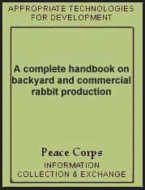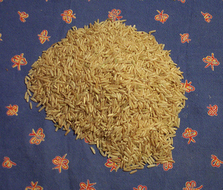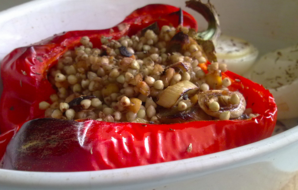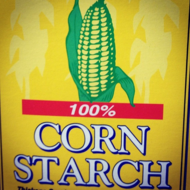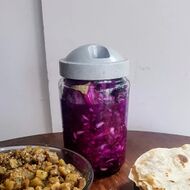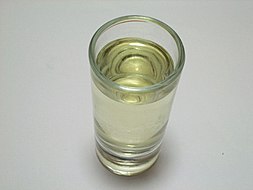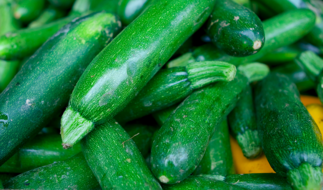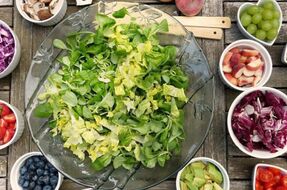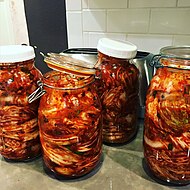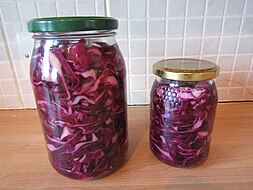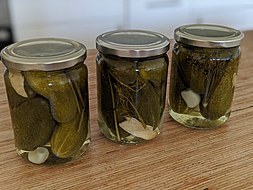Eat less meat
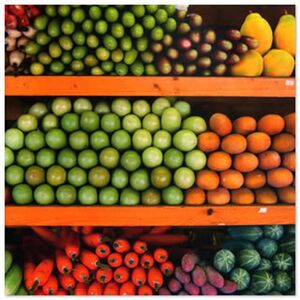
Reducing your meat consumption can not only improve your health,[1] make you live longer,[2] be in line with your ethics, and many more benefits; it can also help solving environmental issues such as deforestation and climate change. This is mainly because meat production requires a lot of land for growing animal feed. Meat production industry is one of the most harmful industries for the environment as it causes a massive amount of greenhouse gas emissions and wastes large amounts of water and grain.
Even though it might be tough, reducing meat consumption will lower the demand for meat, in turn reducing the environmental impact of this industry. Producing plant-based foods generally results in fewer greenhouse gas emissions and requires less energy, land, and water. This is why eating more vegetables, fruits, whole grains, legumes, nuts, and seeds, and less meat and dairy, can significantly lower your environmental impact.[3]
In addition, you can reduce your impact on the environment by buying local. Buying local products and other goods not only reduces some of the energy consumption involved in the transport of food, it also supports local farmers[4] and growers in your community.[5]
Environmental impact of raising livestock for meat[edit | edit source]
Energy inefficiency[edit source]
Generally, raising animals for human consumption is less efficient and requires more energy and water inputs than is required to produce other food sources such as fruits, vegetables, grains, and legumes. This is due to the fact that these animals need to be fed with crops themselves, which need to be grown and transported (both requiring CO2 emissions). In addition, these crops (which are generally consumable by humans) can also no longer be consumed directly by humans.
Studies performed at Cornell University have shown that the production of animal protein can require as much as eight times the amount of fossil-fuel energy when compared to the production of plant protein. They have also calculated that grain-fed beef production takes 100,000 liters of water for every kilogram of meat produced, and that chicken production takes 3,500 liters of water for every kilogram of meat produced. In comparison, soybean production uses 2,000 liters of water for every kilogram of food produced; rice, 1,912; wheat, 900; and potatoes, 500. Also, they concluded that the U.S. could feed 800 million people with the grain that livestock eat (U.S. could feed 800 million..., 1997). Many other similar studies and lifecycle analyses have been done that reach this same general conclusion: the production of animal protein is generally much less efficient than the production of fruits, vegetables, grains, and legumes and requires larger inputs of resources. As the human population continues to increase, both energy and water demands are also likely to increase. With the predicted shortage of both these resources becoming more of an increasing concern for the near future, the viability of meat production (at least how it is performed presently) may become more problematic (Brower, 1999).
In 1998 the Worldwatch Institute concluded that each kilo of meat that is produced represents several kilos of grain that could have been directly consumed by people. If the 670 million tons of the world's grain that is used for feed were reduced by just 10 percent, this would free up 67 million tons of grain, enough to sustain 225 million people for the next three years (United States Leads World Meat Stampede, 1998).
It should be noted though that besides switching completely to growing fruits, vegetables, grains, and legumes, non-mammalian animals can also be used to produce animal flesh. Although this isn't meat, it's relatively close to it, and these animals are far less energy-inefficient.
However, some critics point out that growing crops can still use up large amounts of fossil fuel and water resources. For example, crops that are planted and harvested on a large scale require mechanical machinery that burn fossil fuels, as well as pesticide and fertilizer inputs which are petroleum-based. Also, where water is subsidized, farmers have little incentive to conserve their water usage. In addition, eating overly processed, packaged, and transported vegetables may in fact use more energy than eating a local, organic chicken breast in some cases (Oliver, 2008). This criticism points out that if one wishes that their diet use the least amount of resources, it is not as simple as just cutting out meat consumption. Other factors also play a role such as long-distance transport, packaging, and some horticultural practices (Reijnders, 2003).
Methane emissions from the animals themselves[edit source]
According to report by FAO in 2006, livestock production generated 37 percent of human-induced methane and 65 percent of human-related nitrous oxide emissions. This data is important because methane is 23 times more destructive to the atmosphere than CO2. Nitrous oxide is 296 times more harmful (Oliver, 2008). Some researchers have calculated that simply cutting out meat from one's diet just one a day a week would be the equivalent of driving 1860 km less a year. Cutting out meat consumption completely would have a much greater impact (Callaway, 2008).[6]
Resource use[edit source]
Water
"The world is moving towards increasing problems of freshwater shortage, scarcity and depletion, with 64 percent of the world's population expected to lie in water-stressed basins by 2050. The livestock sector is a key player in increasing water use…It is probably the largest sector source of water pollution, contributing to eutrophication, 'dead' zones in coastal areas, degradation of coral reefs, human health problems, emergence of antibiotics and hormones, chemicals from tanneries, fertilizers and pesticides used for feed crops, and sediments from eroded pastures" (Steinfeld, 2006).
Deforestation
The livestock sector plays a major role in deforestation. For example "in Latin America where the greatest amount of deforestation is occurring- 79 percent of previously forested land in the Amazon is occupied by pastures, and feed crops cover a large part of the remainder" (Steinfeld, 2006).
Biodiversity
"The livestock sector may well be the leading player in the reduction of biodiversity, since it is the major driver of deforestation, as well as one of the leading drivers of land degradation, pollution, climate change, over fishing, sedimentation of coastal areas and facilitation of invasions by alien species" (Steinfeld, 2006).
The environmental issues surrounding meat production are complicated and intricate. A more detailed discussion of these impacts, as well as issues that are social and economical in nature, are discussed in further detail in the United Nations Report "Livestock's Long Shadow": http://web.archive.org/web/20140806144540/http://www.virtualcentre.org:80/en/library/key_pub/longshad/A0701E00.htm
- Destruction of natural habitat to create land for cattle
- Destruction of natural habitat (e.g. rainforest) to grow food for cattle.
- Competition for food with humans - this means that wealthier people eating lots of meat increases the price of agricultural produce, which makes life harder for poorer people. This may not be an issue where:
- The animals live on scraps
- The animals live on other feed which humans do not eat, e.g. grass (cattle), household scraps (pigs, goats, chickens) and insects and seeds found in a garden (chickens, ducks).
Meatless recipes[edit | edit source]
Here you will find delicious cooking ideas that involve reducing your meat consumption and environmental impact.
See also[edit | edit source]
References[edit | edit source]
- ↑ https://www.mayoclinic.org/healthy-lifestyle/nutrition-and-healthy-eating/in-depth/meatless-meals/art-20048193#:~:text=The%20health%20factor,heart%20disease%20than%20nonvegetarians%20do.
- ↑ https://edition.cnn.com/2016/08/01/health/meat-eaters-risk-of-death-plant-protein/index.html
- ↑ https://www.un.org/node/143154#plant-based-food
- ↑ https://greenlivingguy.com/2021/02/organic-herbal-farming-and-its-benefit-to-the-environment/
- ↑ https://greenlivingguy.com/2020/04/5-great-tips-to-make-your-home-eco-friendly/
- ↑ Note that emissions ie from the animal itself (animal farts), as well as methane release from the feces (the latter being even worse) hugely depends on the feed given. The best is to give only one type of food (as their stomach then becomes more specialised to digest this)
